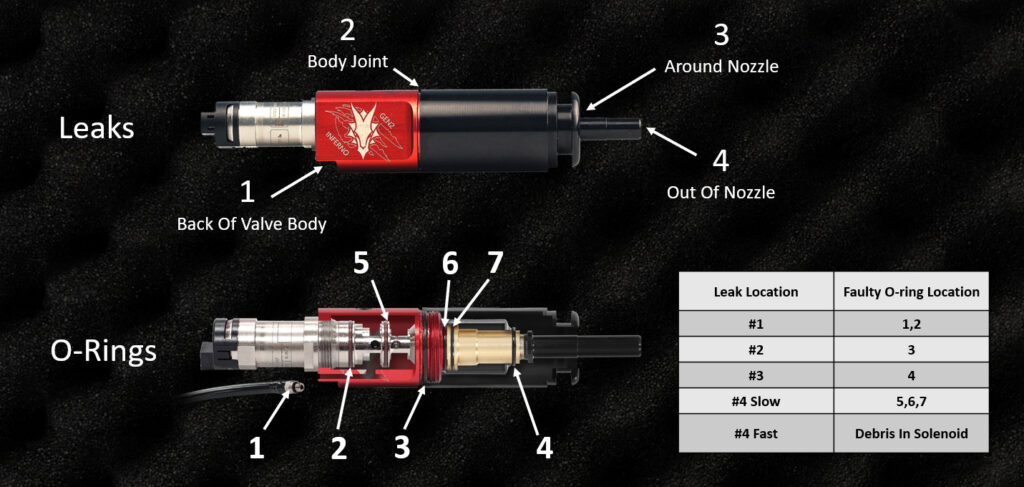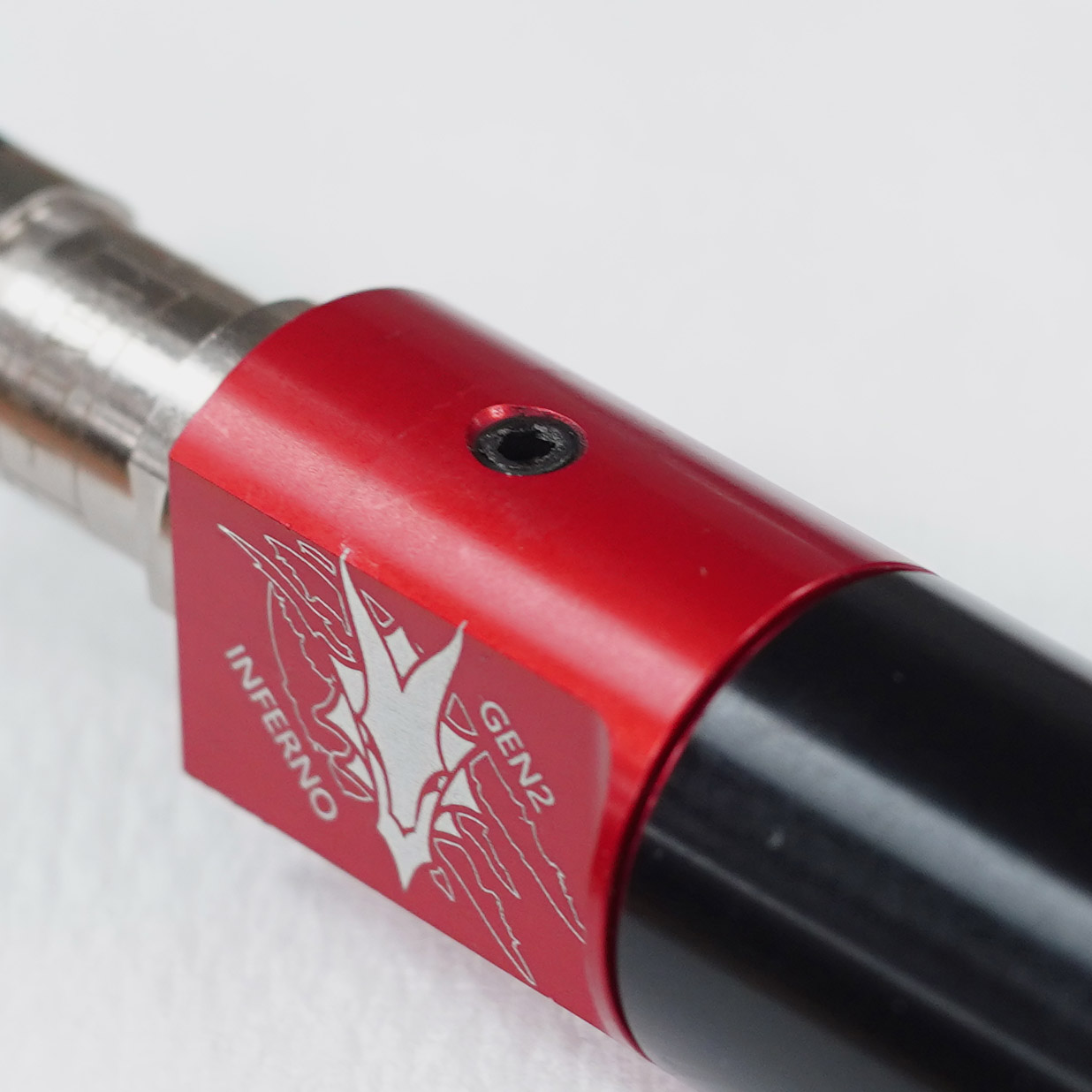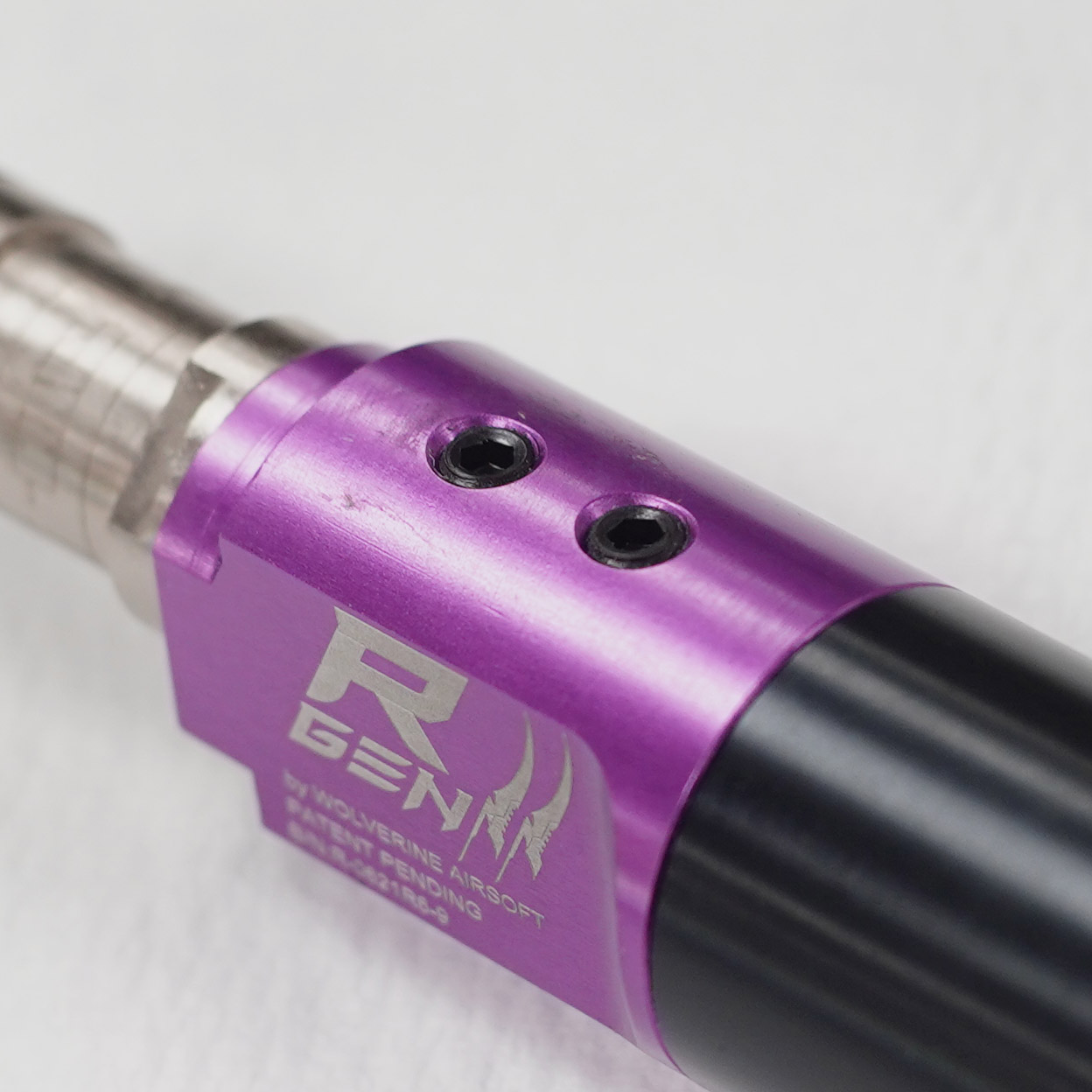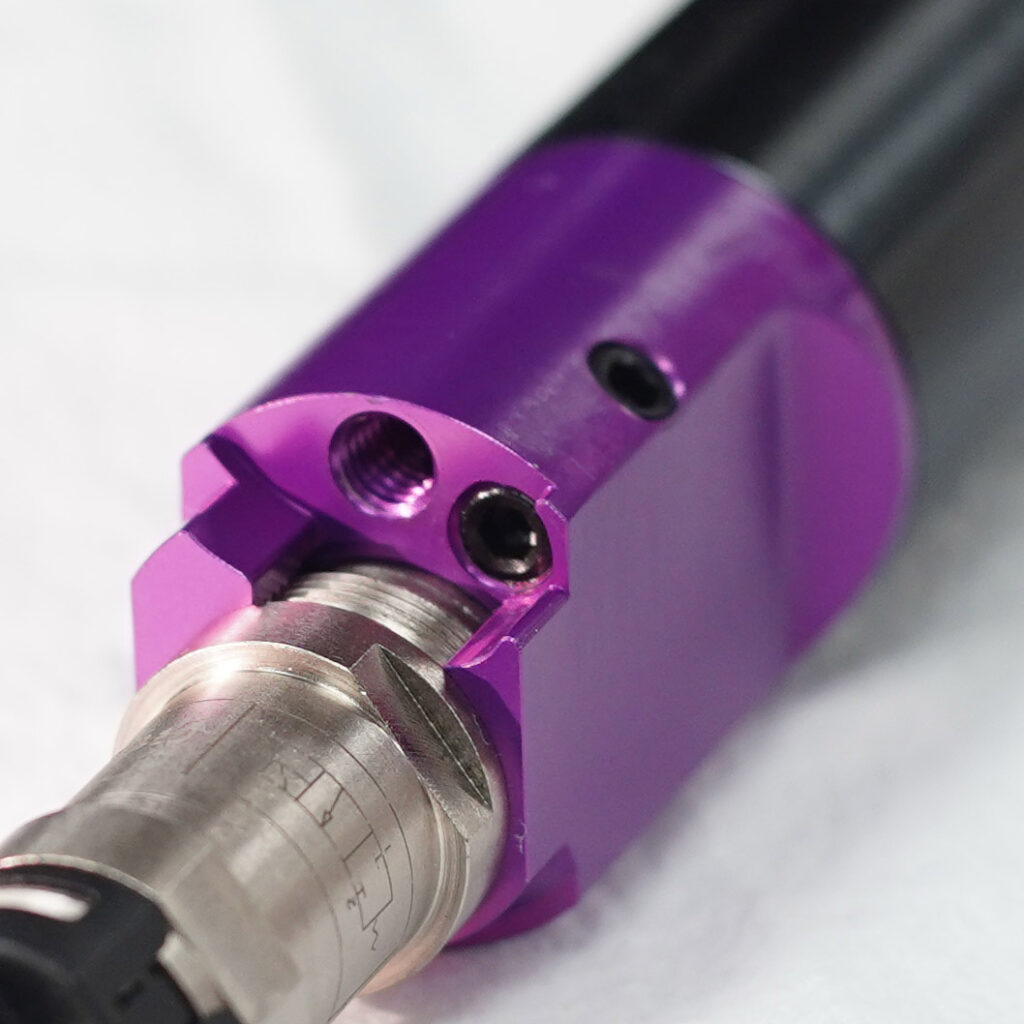If your INFERNO Gen 2 is leaking, use this diagram to determine which O-ring may be faulty. For example, if your engine is leaking from around the nozzle, you should check the location and condition of O-ring #4.

For instructions in replacing an O-ring, please see the INFERNO Gen 2 Owner’s Manual.
If your INFERNO Gen 2 is leaking, use this diagram to determine which O-ring may be faulty. For example, if your engine is leaking from around the nozzle, you should check the location and condition of O-ring #4.
For instructions in replacing an O-ring, please see the INFERNO Gen 2 Owner’s Manual.
Cylinder Plugs



The cylinder plugs are part of the manufacturing process and are not adjustable or removable. Never attempt to remove or adjust the cylinder plugs. Doing so will cause leaking and engine malfunction. Already done it? Follow these steps…
- Remove the valve from the engine.
- Clean the threads of the plug(s) and valve housing thoroughly with acetone or fingernail polish remover and a sharp tool like an O-ring pick.
- Apply a small amount of black Vibra-Tite super glue or Loctite to the cylinder plug(s) threads and work it completely around the threads.
- Reinstall the cylinder plug(s) flush with the outside of the valve housing. DO NOT screw the plug in all the way as it may damage the valve.
- Allow to dry for at least one hour.
- Attach an air source and ensure an air-tight seal.
Airflow Animation
See also: Solenoid Leaks
